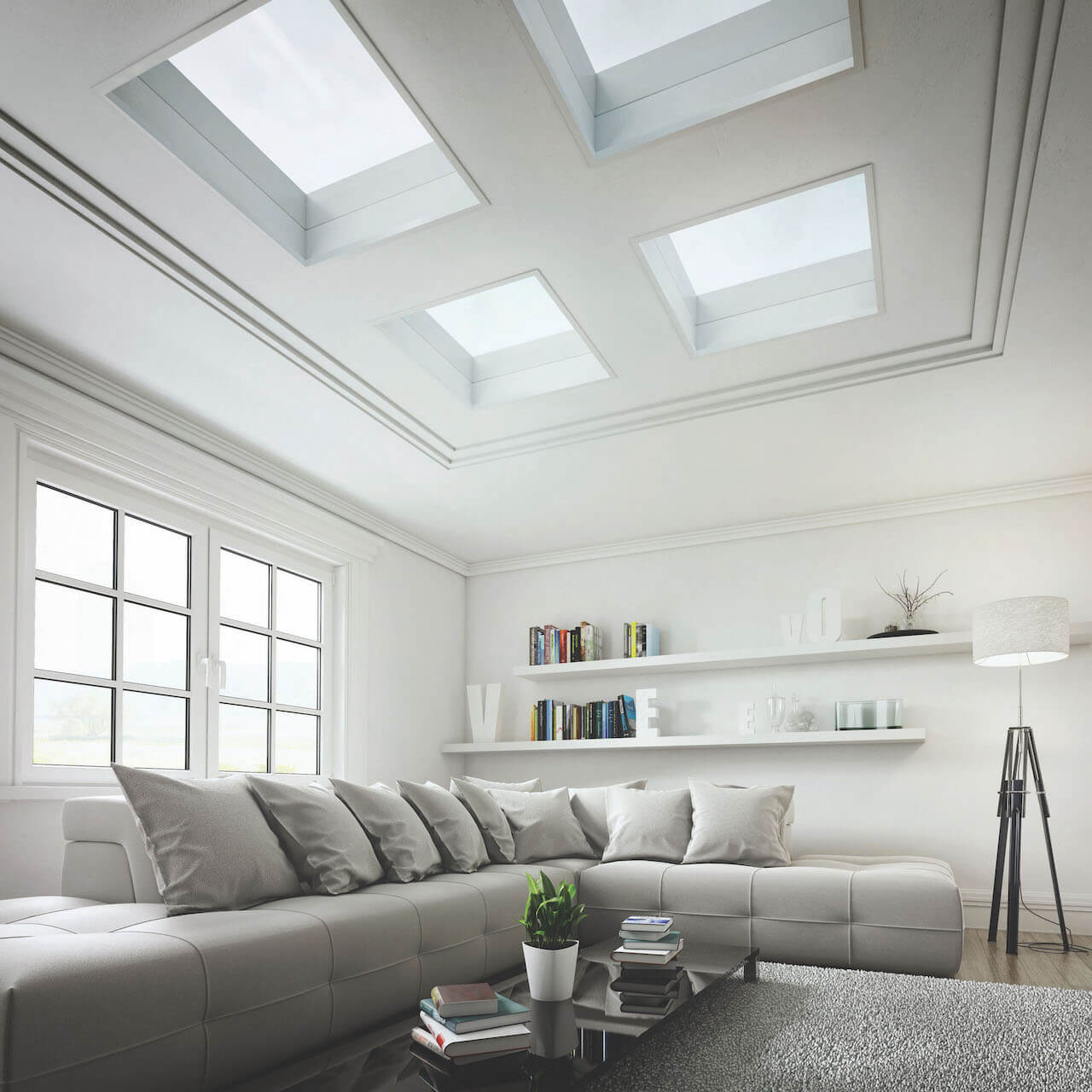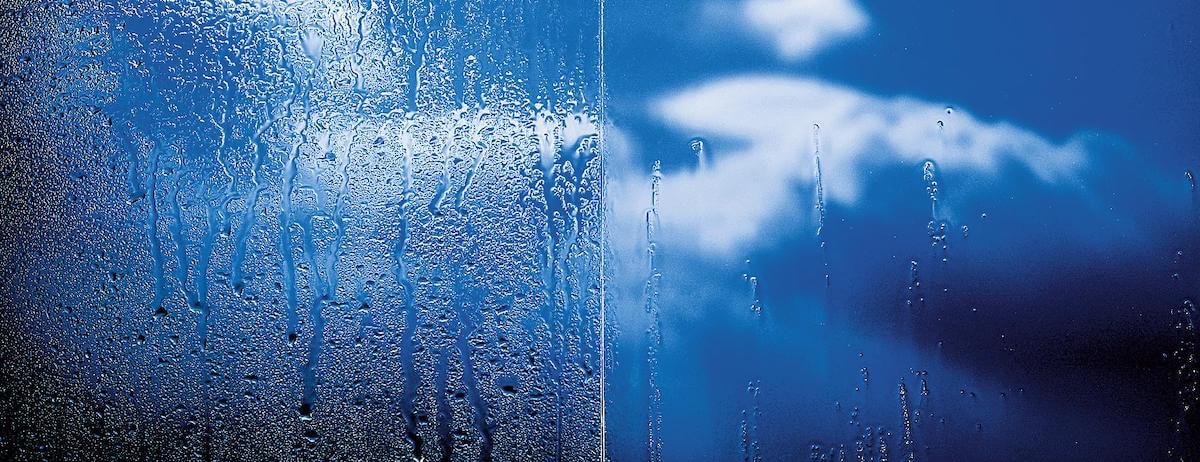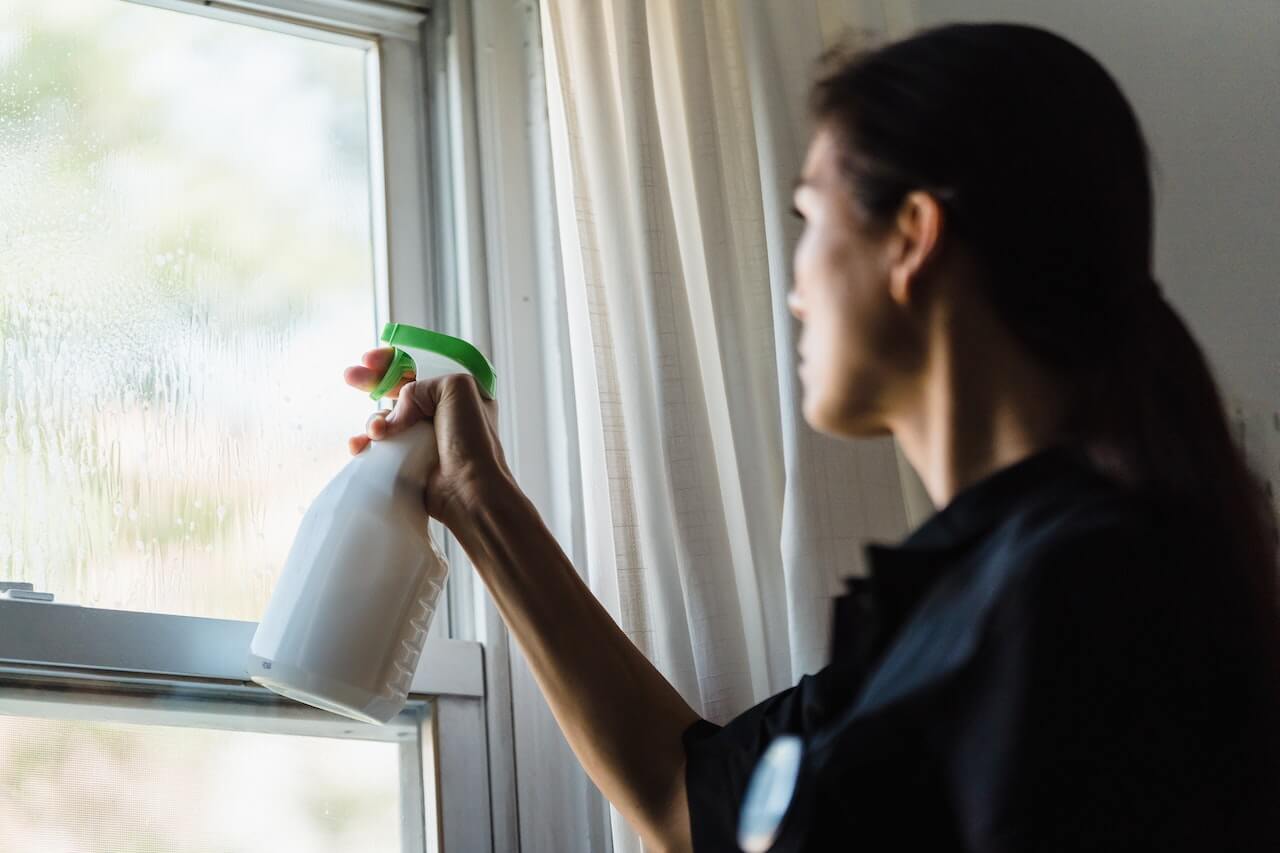Table of Contents
Roof windows are a common attribute of modern-style houses, as they enable natural light to flood into the room, making the space look more spacious, inviting, and just airy.
In addition to their aesthetic qualities, roof windows are excellent sources of ventilation and contribute to the thermal comfort of a building, so installing them (potential linking to How To Install Roof Windows) can also lead to reduced energy consumption and, therefore, lower heating costs.
And while one of the best things about flat roof windows or skylights is that they can fit into those spaces where a conventional window frame cannot, there is the other side of the coin. Roof windows and skylights are often located in hard-to-reach places, meaning that you will have difficulty accessing them from the inside.
While this might not seem like a big deal on a day-to-day basis, this will become a challenge when the time for cleaning your roof windows comes.
Besides, a rooftop window mounted on a flat roof may be more vulnerable to rainwater stains, discolouration, and other contaminants such as bird droppings, tree sap, and pollutants from car exhaust.
As a result, regular cleaning and maintenance, as well as periodic inspection of the units, are advised not only to keep a perfectly clear view but also to extend the roof window’s service life – just like with any other window in your home.
When it comes to cleaning roof windows, hiring a professional window cleaner to do the job for you can be the safest and the least laborious choice.
However, it is also a costly one. If you are able to access your roof windows, you’ll be able to tackle this task on your own – but you need to be adequately prepared in terms of cleaning products and tools.
For the best results, join us as we guide you through the roof window cleaning process – and maximise the amount of natural daylight in your home!
Factors to Consider When Cleaning Flat Roof Windows
Before we move on to the cleaning part, let’s briefly go through a few factors you need to take into account first. The most important one is the type of glass – whether it is self-cleaning or not.
Self-Cleaning Glass
Some skylight windows feature a specifically designed coating, referred to as self-cleaning glass, which makes the whole process of cleaning your roof windows a lot easier and less frequently needed.
But how does self-cleaning glass work?
This type of low-emissivity glass is usually treated with an invisible, durable coating – in the majority of cases based on titanium dioxide. When exposed to sunlight, it breaks down organic dirt, such as bird droppings, tree sap, and pollen, into water vapour and carbon dioxide. The water vapour then evaporates, taking the dirt with it, while the carbon dioxide is dispersed in the air.
As effective as self-cleaning glass is, it is not completely maintenance-free. While the titanium dioxide coating will do most of the work for you, you will still need to remove any stubborn residue that might be left behind – and this is where regular cleaning comes in.
Moreover, the self-cleaning properties of the glass are diminished when there isn’t enough UV radiation to activate it (for this reason, manufacturers recommend a minimum pitch of 30 degrees, which is unachievable in the case of flat roofs). So, if your roof windows are located in a shady spot or on a flat roof, you might still have to supplement the natural process with some elbow grease and clean them manually from time to time.
Besides, even the best self-cleaning glass will require some maintenance, as it is not immune to scratches or other types of damage.
Non-Self-Cleaning Glass
On the other hand, if your roof windows are not treated with a self-cleaning coating, you will have to give them a good clean more often. This is not necessarily a bad thing since you will be able to exercise more control over the cleaning process and achieve better results.
However, it also means that you will have to put in a little more effort and use more cleaning products. You also need to be careful not to damage the surface. The most common type of damage is scratching, which can be caused by using the wrong type of cleaning cloth or by rubbing too hard.
So, when cleaning non-self-cleaning glass, make sure to use a soft, lint-free cloth – such as a microfiber cloth – and avoid using harsh chemicals or abrasive materials.
The next step is to identify the type of roof window you have (potential linking to How To Choose Roof Windows). There are two main types of roof windows – fixed and openable.
Fixed Roof Windows
Fixed roof windows are the most common type, as they provide excellent insulation and are the most cost-effective option. As the name suggests, these units cannot be opened, so the only way to clean them is from the outside; the advantage is that the outer pane of your window will have much more dirt and residue than the inner pane.
This can be done with a power washer (but make sure to keep the pressure low to avoid damaging the glass), a garden hose with a spray attachment, a long-handled brush or a pole with a soft-bristled brush attachment, or a bucket of mild soapy water and a sponge.
Openable Roof Windows
Openable roof windows, on the other hand, as their name suggests, can be opened. As such, you can easily clean them from the inside, which is much more convenient. Most popular flat roof windows open for ventilation only. For instance, VELUX roof windows and ROOFLITE+ roof windows come in two types of openable roof windows – manual and also electric opening, which makes the cleaning process even more manageable. As for other benefits, electric hinged flat glass rooflights, for example, maximise the airflow and natural lighting inside.
If your roof window is one of the openable types, you can just rotate the sash and secure it into a cleaning position by taking the barrel bolt and putting it into the bottom of the side frame. This safety feature leaves both your hands free for cleaning.
Another factor to consider is the location of your roof windows. If they are installed in a hard-to-reach spot, or you can access them only from your roof, you might need to use a specialist roof ladder to do it safely – and this can still be dangerous if you are not experienced in working at height. In this case, it is best to consider hiring a professional window cleaning company to do the job for you.
Last but not least, you need to take into account the type of dirt or contaminants that have accumulated on your roof windows. If we are talking about light dirt, such as dust or pollen, you will be able to clean the glass with just a wet cloth. However, if the dirt is more stubborn, you might need to use a cleaning solution.
Now that we have gone through all the factors you need to take into account before starting to clean your roof windows, let’s take a closer look at the cleaning products and tools you should use.
Cleaning Products and Tools
As mentioned above, you need to identify what kind of dirt, grime, and build-up is present on your roof windows. Depending on the severity of the problem, you will need to select the most appropriate cleaning solution and tools.
When it comes to cleaning solutions, there are two main types – chemical and non-chemical. Chemical cleaners usually contain strong acids or alkalis that can damage the glass if used in high concentrations. For this reason, it is best to use them only when absolutely necessary and follow the manufacturer’s instructions to the letter.
Non-chemical cleaners, on the other hand, are usually based on vinegar or lemon juice and are much safer to use. However, they might not be as effective in removing stubborn dirt.
The best way to clean your roof windows is to start with a non-chemical cleaner – mild detergent or soap – and see if it does the job. If it doesn’t, you can always move on to a chemical one – but make sure to use it sparingly and in accordance with the manufacturer’s instructions.
In short, for light dirt and dust, a soft, clean cloth dampened with soft water should be enough to do the trick. If the windows are significantly soiled, or there are stubborn stains that refuse to budge, you can make use of a glass cleaner or a vinegar solution. For more challenging tasks, such as removing water spots, tree sap, or bird droppings, you may need to resort to using abrasive cleaners or rubbing alcohol.
If you prefer to stick to chemical-free options, here are a few of the best DIY solutions for cleaning your roof windows:
Vinegar Solution
One of the most popular non-chemical cleaners is vinegar. Vinegar is a weak acid that can dissolve dirt, grime, and soap scum – but it is also gentle enough not to damage the glass.
To prepare a vinegar solution, mix equal parts of water and white vinegar in a spray bottle and shake well to mix. This acidic composition acts quickly and breaks down the kind of film that frequently accumulates on glass surfaces.
Lemon Juice Solution
Lemon juice is another popular non-toxic cleaner that can be used to clean flat roof windows. Like vinegar, lemon juice is a weak acid that can dissolve dirt and grime – but one of the best things about lemon juice is that it doesn’t leave any residues and traces on smooth surfaces, which makes it perfect for cleaning window panes.
To prepare a lemon juice solution, mix two parts of water and one part of freshly squeezed lemon juice in a spray bottle and shake well to combine. This will make the glass sparkly clean.
Baking Soda Solution
Baking soda is a natural cleaning agent that can be used to clean a variety of surfaces – including glass. This mixture can be used to clean stubborn stains and residues – just make sure to rinse the glass thoroughly afterwards to avoid leaving any traces of baking soda on the surface.
To prepare a baking soda solution, mix one part of baking soda and two parts of water in a bowl and stir until the baking soda has dissolved.
Once you’ve determined the cleaning solution you will be using, it is time to gather your tools. In addition to a soft cloth or a sponge, you will need a non-metal window squeegee for the drying process, as well as a brush with soft bristles for hard-to-reach areas.
A ladder is also a must – but if you don’t feel confident about working on one, you can always hire a professional window cleaner instead.
How Often Do You Need to Clean Your Roof Windows and Skylights?
This depends greatly on several factors, including the location of your roof windows, as well as their size, shape, and pitch.
However, for proper maintenance and the abundance of consistent natural daylight in your interior, it’s recommended to carry out a general inspection and cleaning at least once every six months.
So, How to Clean Flat Roof Windows?
Now that we’ve gone through all the different aspects of preparation, let’s finally get down to business – the actual cleaning process.
Outside Cleaning
To clean fixed flat glass rooflights from the outside, you will need:
- a long-handled brush or a pole with a soft-bristled brush attachment,
- a hose with a pressure washer attachment (optional),
- a bucket of warm soapy water,
- a soft, lint-free cloth,
- a squeegee,
- a microfiber cloth.
When it comes to cleaning flat roof windows from the outside, safety should be your top priority. You will need to use a ladder to access the unit, so you need to be extra careful not to slip and fall. Make sure that the ladder is placed on a stable and level surface before you start climbing, and if possible, ask someone to hold it in place for you.
Now, here are a few simple steps you should follow:
- Remove the debris. Once you are up on the roof, start by removing any debris, such as leaves, twigs, and bird droppings, that might have accumulated on the surface. Removing these from the edges around skylights annually allows rainwater to flow freely. You can use a soft-bristled brush or a microfiber cloth to wipe them off – just be careful not to scratch the glass.
- Wet the glass. Move to wetting the glass with a hose – or a bucket of warm, soft water if you don’t have a hose. This will help to loosen any dirt or debris that might be stuck to the surface.
- Apply soap. Spray your cleaning solution onto the glass surface and leave it to work for a few minutes.
- Scrub the glass. After letting the detergent or soap sit for a few minutes, using the brush with soft bristles, gently scrub the area in a circular motion until all the dirt and grime have been removed. You will be able to remove the light dirt with just a damp cloth.
- Rinse the glass. Rinse the glass with clean water to remove any soap residue. If you are using a pressure washer, make sure to keep the pressure low to avoid damaging the glass.
- Dry the glass. Once you are satisfied with the results, grab the squeegee and dry the surface thoroughly to remove any excess water from the glass. Then, finish off by wiping down the frame and sill with a clean, dry cloth to dry the surface and remove any streaks.
Inside Cleaning
(instruction as above)
If you can reach your roof windows from the inside, you can give them a good clean with relative ease. However, when it comes to a rooftop window placed on a flat roof, you’ll probably need a ladder to access them – always remember to take all the necessary safety precautions.
First and foremost, make sure that your ladder is in good condition and positioned correctly before you start climbing it. Once you’re on the ladder, avoid leaning too much to the side – it’s best to keep your body close to the rungs at all times.
For cleaning your roof windows from the inside, you will need:
- a bucket of warm water,
- a mild detergent or soap,
- a soft, lint-free cloth,
- a squeegee,
- a dry microfiber cloth.
As for the cleaning process itself, you can follow similar steps as those for the outside cleaning. The first thing you need to do is to vacuum clean the surface of your roof window or skylight (potential linking to What Is The Difference Between A Skylight, Rooflight Or Roof Window?) to remove any cobwebs and dust that might have accumulated over time.
Then, apply a generous amount of glass cleaner to the window pane and use a squeegee to remove it along with all the dirt and grime. To avoid streaks, start from the top and work your way down in even strokes. Finally, use a dry microfiber cloth to buff the glass and eliminate any excess water and residual cleaner.
You can also use this opportunity to check the sealant around the edges of the glass and see if there are any cracks or gaps. If you notice any, you will need to reseal the area to prevent water and dirt from coming in and causing long-term damage.
And there you have it – your roof windows are now sparkling clean and ready to let in plenty of natural sunlight!
A Few Extra Tips for the Best Results
Now, as you’re already familiar with the basic steps of cleaning roof windows, you can use a few additional tips to make the process less tiresome and safer for glass and, more importantly, yourself.
Here are some things you should keep in mind when cleaning your flat roof windows:
- If your window has a flyscreen, make sure to remove it before starting the cleaning process.
- Don’t neglect cleaning the air filter – the thin foam-like strip that lines the window’s internal railing and catches small dust particles. To clean the air filter, rotate and secure the window in the cleaning position, then wash the filter gently with some soap and soft water and leave it to dry.
- If there are multiple skylights, start with the highest one and work your way down.
- If you notice stubborn stains that refuse to come off with the window cleaner, try using a razor blade held at a 45-degree angle to scrape them off. However, be very careful not to apply too much pressure as you might damage the glass.
- Avoid contact of any abrasive or sharp objects with the window pane. This includes not only avoiding using metal scrapers, sponges, and harsh bristles but also removing your jewellery, watch, or other accessories before cleaning windows.
- If any work is happening near the window pane, you can protect it with a clean plastic sheet that will prevent any splashes or staining from aggressive and abrasive compounds.
- In addition to following the manufacturer’s instructions, always wear rubber gloves whenever working with chemical cleaners.
The Bottom Line
Flat roof windows can make your home feel more spacious and airy; however, if you don’t take care of them properly, they can become a source of dirt and grime and even lead to mould growth or mildew – all of which will detract from their aesthetic qualities and can also put your health at risk.
As such, if you want to extend the service life of your flat roof windows and squeeze the maximum natural sunlight out of them, make sure to give them a thorough clean once in a while. The great news is that with mindful preparation and proper cleaning materials at hand, the daunting task of cleaning your flat roof windows becomes much more manageable.
However, the most crucial task is always to put your safety first. If you are planning to clean your flat roof windows on your own, do make sure to take all the necessary safety precautions – especially when it comes to climbing a ladder. Happy soaping!




